Exploring Indiana
This past year I got a yearning to explore Indiana. Why Indiana? It was the state my mom came from. I’ve had grandparents, an uncle and aunt and cousins who lived and still live there. I’ve visited them probably hundreds of times. My first job, as a soil scientist conducting a county soil survey, was in Indiana. I went to school there. I have learned that in many ways it is a beautiful state with friendly people, with about half the population of Ohio. Reading through the beautiful book “The Natural Heritage of Indiana” by the Indiana Academy of Science, made me want to explore the natural areas of Indiana
more. Looking at it through the lens of two of my main natural interests, bryophytes (as well as other plants) and soils, seemed attractive to me.
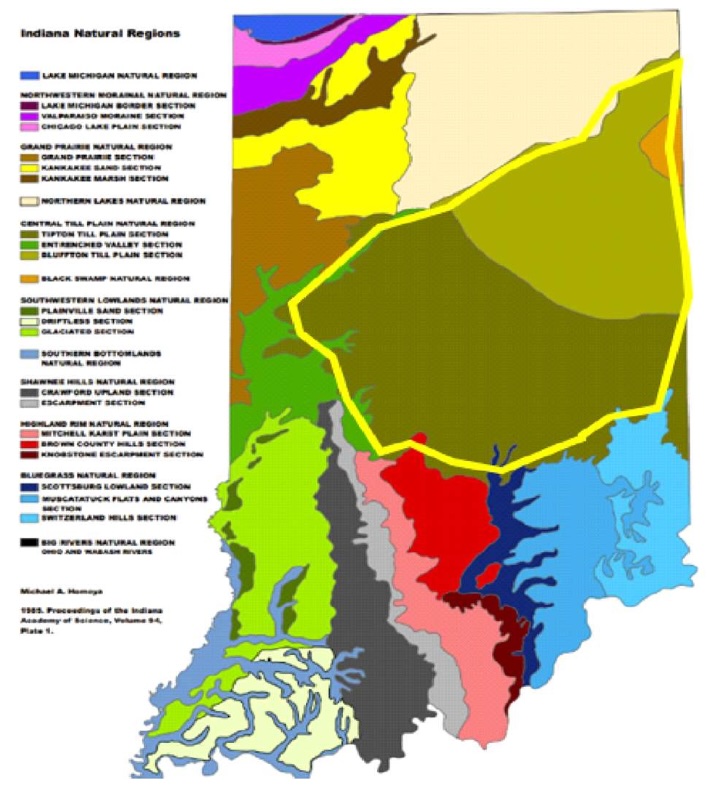
Its natural areas, much like Ohio, are greatly underestimated and underappreciated. Like Ohio, when people think of Indiana, they often think of large expanses of cropland. For much of this erroneous thinking, blame I-70; it rolls across the natural regions that are presently mostly cropland in both Ohio and Indiana, and peoples’ thought tend toward “booooring”. This area is bordered by the yellow line on the map of Indiana natural areas. Yet the other natural areas of Indiana outside this region have lots to offer. Even within the area that is largely cropland, once you get off the interstate, the country, even in farm country, becomes much more interesting. Even there, there are numerous small preserved and beautiful natural areas that are worth exploring.
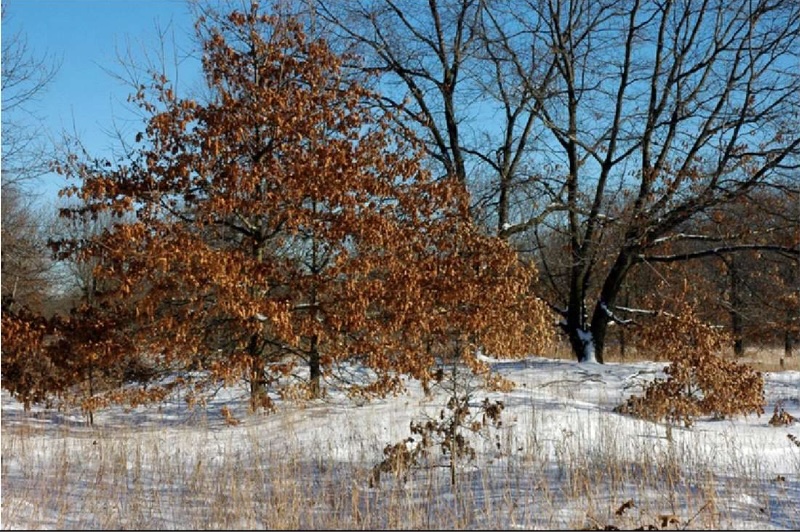
John Merle Coulter Nature Preserve in northwest Indiana. Characterized by black oak savanna, wetlands, sandy soil, including sand dunes. Has a very diverse and large native flora.
The natural regions of Indiana are diverse and have numerous area that are not represented or not well represented in Ohio. These areas include: Southern Bottomlands Region (large riparian areas near the Ohio River); Northwest Moraine Area (an end glacial moraine area with very diverse soil types and rugged glacial topography); Northern Natural Lakes Region (natural lakes, rough glacial moraine areas and large areas of glacial outwash); Entrenched Valley Area (numerous rock outcrops and ravines); and Southern Indiana (limestone or sandstone outcrops and cliff, deep ravines, karst areas, barrens, many small stream and other diverse habitats and substrates).
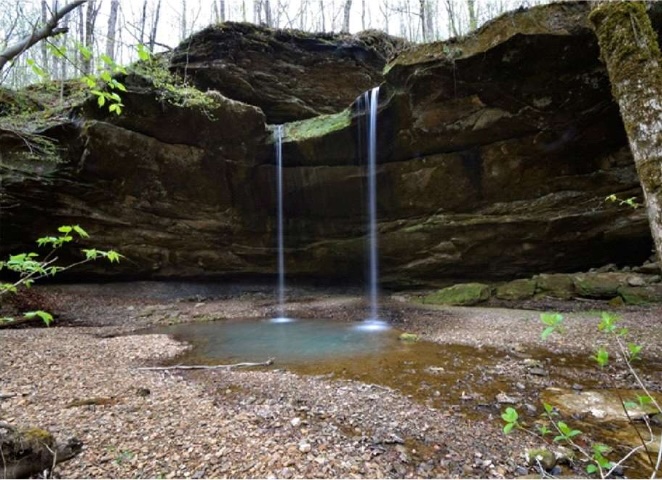
As far as cryptogam records in Indiana go, the short answer is they need work, lots of work. Of course, there are some areas that have been very well explored (the dunes area and well-known parks and areas with lots of cliffs, such as Turkey Run or Clifty Falls State Parks come immediately to mind). But many other areas, are under- explored for bryophytes, and certainly so for lichens.
A quick look at the Lichen Portal shows 4,000+ records (individual specimens donated to various herbariums) for Indiana; Ohio shows 23,000+ records. A similar quick look for the Bryophyte Portal shows 21,000+ records for Indiana; Ohio shows 51,000+ records.
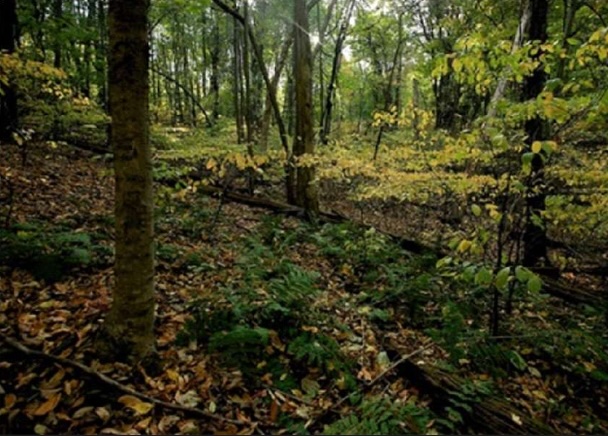
Moraine Nature Preserve in northwest Indiana. The 900-acre area has a combination of rolling hills, steep ridges, deep-woods gorges, muck pockets and potholes. Soils are very varied.
Talks with Indiana Department of Natural Resources Division of Nature Preserves; Indiana Herbariums, and others indicate little active work has been done for quite a while. The people I talked to seemed enthusiastic about the possibility of learning more about cryptogams and welcomed any interest OMLA might have.
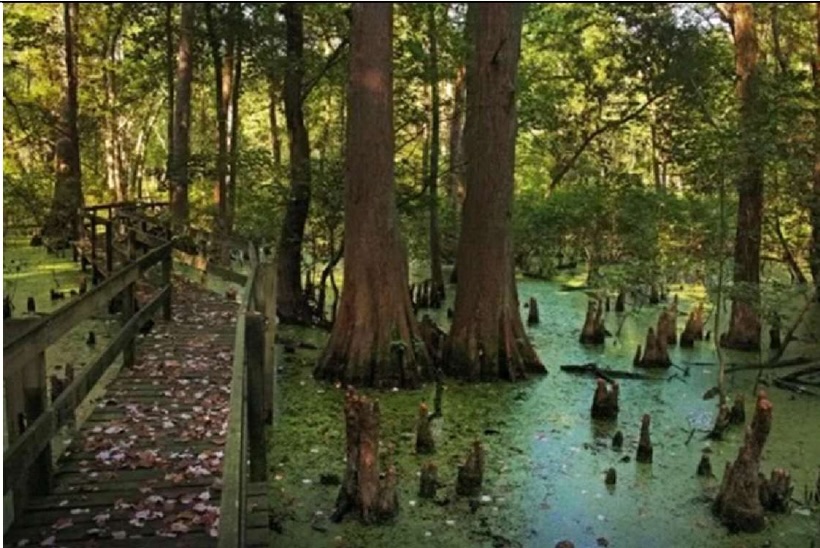
A cypress swamp in the far southwest corner of Indiana, at Twin Swamp Preserve. The other swamp is an overcup oak swamp. It is characterized by old growth forest, including cherrybark oak, post oak, and sugarberry.
Although this is very much a personal interest, in talking to others, it seemed natural to invite them to join if they too are interested. I envision Indiana exploration remaining a strong interest for me, at least for a while. It is a way to explore new territory in a neighboring state that is a bit of a second home for me, without spending a lot of time or money doing so.
A special spring foray is being planned for the last weekend of April 2023. It will be held in northwest Indiana. See the accompanying article for more information.
-Bill Schumacher
